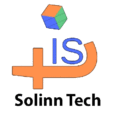Introduction
Fiber optic technology has revolutionized how businesses connect, communicate, and operate in today’s digital economy. Offering ultra-high-speed data transmission, unparalleled reliability, and scalability, fiber optics are the foundation of modern IT infrastructure and broadband networks.
What Are Fiber Optics?
Fiber optics involve transmitting data as pulses of light through thin strands of glass or plastic fibers. Unlike traditional copper cables, fiber optic cables carry signals over long distances with minimal loss and are immune to electromagnetic interference.
Key Advantages of Fiber Optic Networks
- High-Speed Data Transmission: Supports gigabit speeds and beyond, ideal for bandwidth-intensive applications.
- Long-Distance Connectivity: Can transmit data tens of kilometers without signal degradation.
- Improved Security: Difficult to tap without detection, protecting sensitive business data.
- Durability and Reliability: Resistant to environmental factors like moisture and temperature fluctuations.
- Future-Proof Scalability: Easily upgraded with better transmission equipment without replacing cables.
Recent Innovations and Trends
- Integration with 5G Networks: Fiber serves as the backbone for ultra-fast 5G mobile connectivity.
- Photonic Integrated Circuits: Miniature optical components improving efficiency and speed.
- Smart Fiber Networks: AI-powered diagnostics and proactive maintenance to reduce downtime.
Fiber Optics vs. Copper Cables: A Comparative Overview
| Feature | Fiber Optic | Copper Cable |
|---|---|---|
| Speed | Up to 100 Gbps and higher | Typically up to 10 Gbps |
| Distance | Tens of kilometers | Up to 100 meters |
| Security | High | Moderate |
| Susceptibility | Immune to interference | Prone to electromagnetic interference |
| Cost | Higher initial investment | Lower initial cost, higher maintenance |
Applications in Business
- Data centers requiring high bandwidth and low latency
- Corporate networks connecting multiple offices and locations
- Cloud service providers delivering scalable storage and computing
- Remote workforces needing reliable broadband access
How Solinn Technologies Supports Fiber Optic Deployments
Solinn Technologies offers end-to-end fiber optic services including:
- Network design and feasibility studies
- Installation and testing of fiber optic cabling
- Maintenance and upgrades of existing fiber infrastructures
- Integration with wireless and cloud technologies
Choosing the Right Fiber Optic Solution
Consider bandwidth requirements, environmental conditions, budget constraints, and future expansion plans. Solinn Technologies partners with businesses to tailor fiber optic solutions that meet specific operational needs.
Conclusion
Fiber optic technology is the backbone of future-proof, high-performance business networks. Leveraging Solinn Technologies’ expertise ensures your organization gains fast, secure, and scalable connectivity vital for digital success.
Would you like me to create a detailed technical guide on fiber optic installation next or focus on related technology trends like 5G and IoT integration?Here is a fresh, new SEO-optimized article on the topic:
The Rise of AI and Machine Learning in IT Solutions: Transforming Business Efficiency
Introduction
Artificial Intelligence (AI) and Machine Learning (ML) are at the forefront of a digital revolution reshaping IT solutions across industries. These technologies empower businesses to streamline operations, enhance security, automate repetitive tasks, and make data-driven decisions faster than ever before.
What Are AI and Machine Learning?
AI refers to the simulation of human intelligence by computer systems, enabling them to perform tasks like learning, reasoning, and problem-solving. Machine Learning, a subset of AI, enables computers to learn from data patterns and improve automatically without being explicitly programmed.
How AI and ML Transform IT Solutions
- Automation: AI bots and ML algorithms automate routine IT tasks such as system monitoring, software updates, and technical support, reducing human error and operational costs.
- Predictive Analytics: ML models analyze historical data to forecast system failures and optimize resource allocation, ensuring high availability.
- Enhanced Cybersecurity: AI enables real-time threat detection and response by recognizing anomalous behavior indicative of cyber attacks.
- Personalized User Experiences: AI tailors IT services, cloud resource allocation, and network management based on individual user profiles and needs.
Business Benefits of AI & ML Integration
- Operational Efficiency: Speeding up workflows while reducing costs.
- Better Decision Making: AI-driven insights provide actionable information for strategic planning.
- Improved Security Posture: Faster detection and mitigation of cyber threats.
- Competitive Advantage: Businesses leveraging AI are more agile and innovative.
Examples of AI and ML in Action
- Healthcare: AI analyzes medical records to assist diagnosis and personalize treatment.
- Finance: ML algorithms detect fraudulent transactions and manage risk.
- Retail: Automated customer service chatbots and dynamic inventory management.
- Manufacturing: Predictive maintenance reduces equipment downtime through ML.
Solinn Technologies’ AI-Powered IT Solutions
At Solinn Technologies, we harness AI and ML to build smarter IT infrastructures:
- AI-driven network management for performance optimization
- Machine learning-enhanced cybersecurity frameworks
- Automated cloud resource management
- Intelligent IT helpdesk automation
Getting Started with AI and ML
Businesses should begin with:
- Evaluating existing IT systems for AI and ML integration opportunities
- Collaborating with technology experts to develop customized AI strategies
- Ensuring data security and compliance at all times
- Investing in continuous learning to stay ahead in AI innovation
Conclusion
AI and Machine Learning unlock unprecedented capabilities for IT solutions, driving efficiency, security, and innovation. Embracing these technologies with Solinn Technologies enables businesses to thrive in a rapidly evolving digital landscape.
